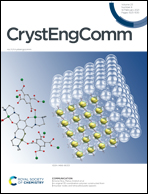Facet stability of GaN during tri-halide vapor phase epitaxy: an ab initio-based approach
Abstract
An ab initio-based approach is used to investigate the facet stability of GaN during tri-halide vapor phase epitaxy (THVPE). First, surface reconstructions are analyzed to create surface phase diagrams as a function of the gaseous pressure and temperature. Next, a triangular wedge model is used to compute absolute surface formation energies with the bulk state as a reference. A Wulff construction is used to predict the crystal growth form composed of energetically preferred facets. The calculated results can be used to control the shape of GaN grown by THVPE.

- This article is part of the themed collection: Crystal Growth


 Please wait while we load your content...
Please wait while we load your content...
